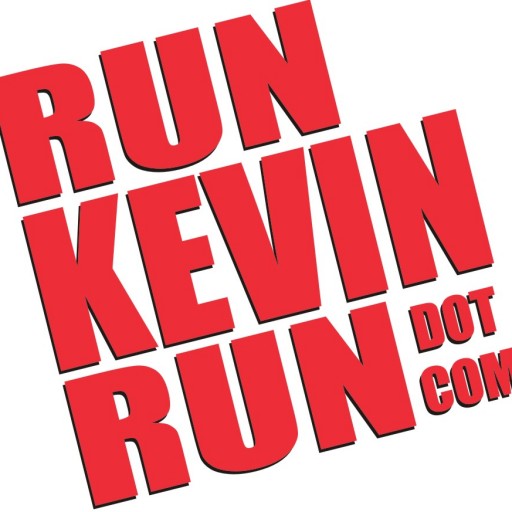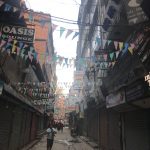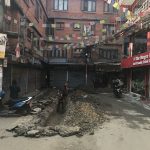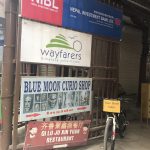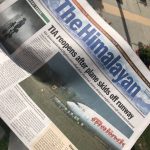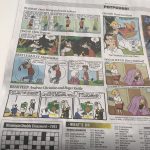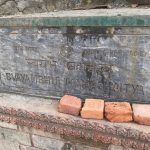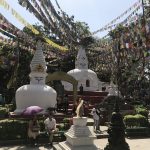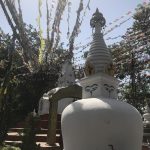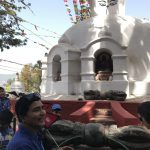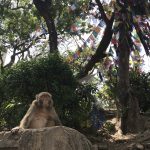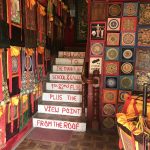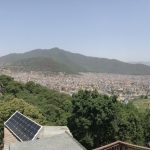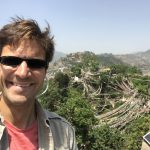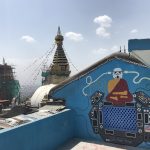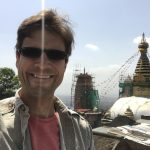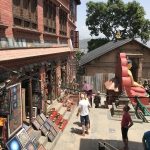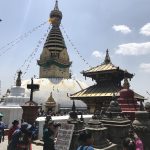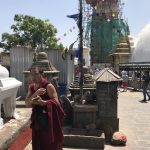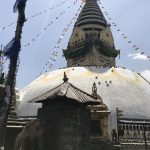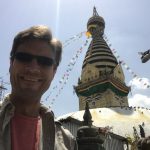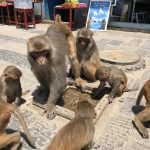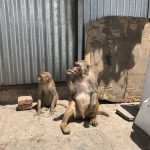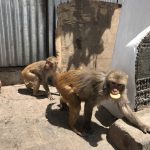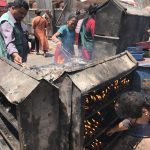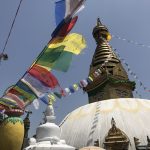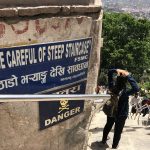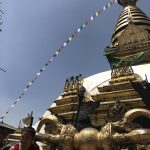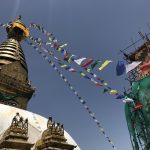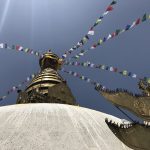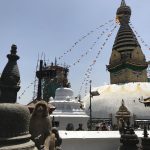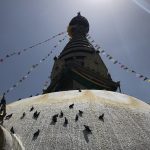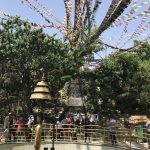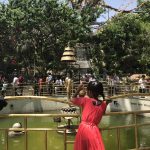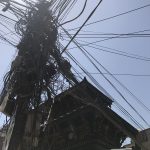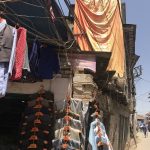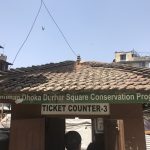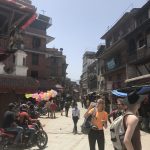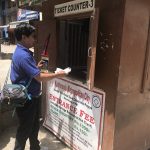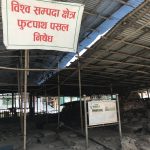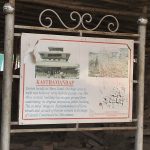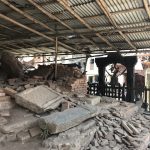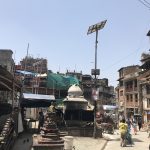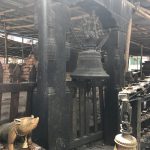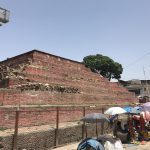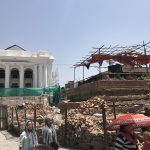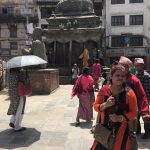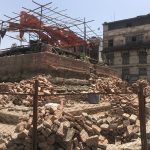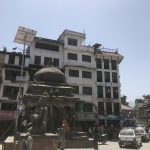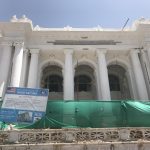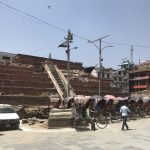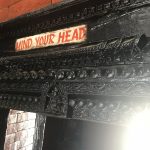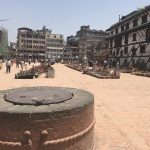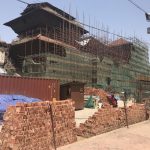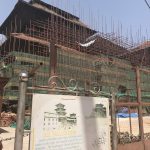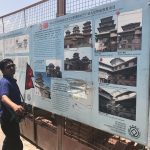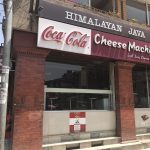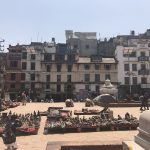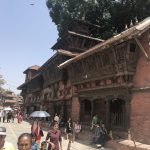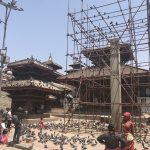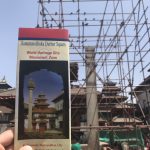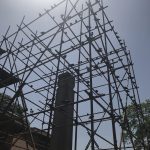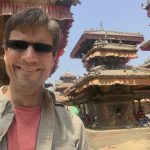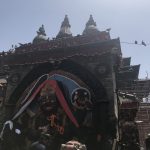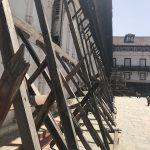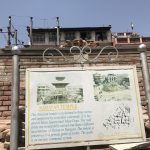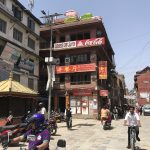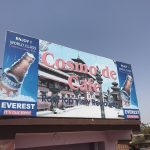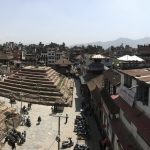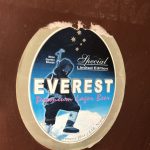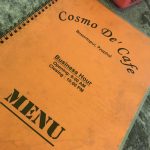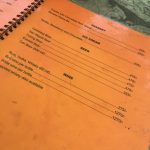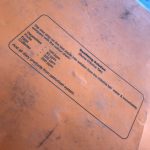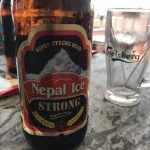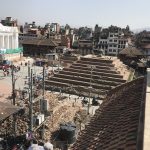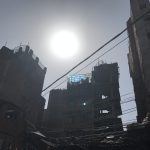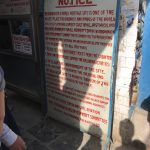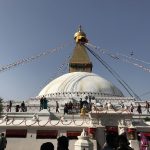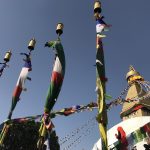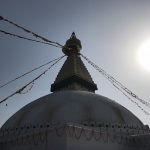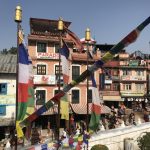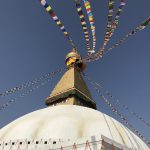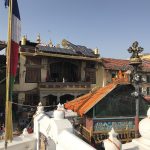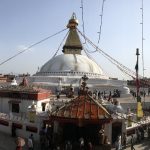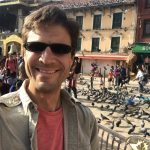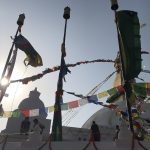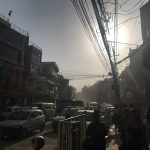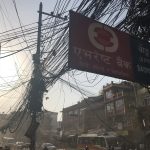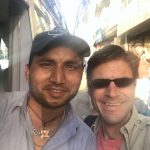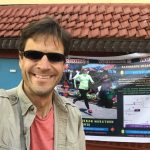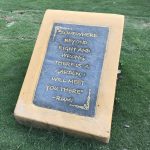From the official itinerary:
“Morning: sightseeing tour of downtown Kathmandu. You will visit Durbar Square and Swayambhunath also called Monkey temple because of the many monkeys that live here. This day we also visit the Boudhanath. This is one of the largest stupas in the world.”
Let me explain. No, there is too much. Let me sum up. Our guide’s name is Arry. I’m sure I’m butchering the spelling but I clarified with him how to say his name. He told me the easiest way to remember it is that it’s like Harry Potter without the H. As a longtime sufferer of people adding an H to the end of my name (it’s not a palindrome, people), I appreciated this tidbit.
The Nepal Flag is a unique proposition — it’s two triangles. One represents the Hinduism faith and the other represents Everest. Or so I was told. The colors have meaning, as do the sun and moon symbols. Nepal has never been colonized, never been conquered. So the blue fringe is a symbol of peace while the red field means if people did attack the country, Nepal would win.
Our first stop of the day was at the Swayambhunath. Nicknamed the Monkey Temple, this is mainly shorthand for the large number of monkeys that roam the area. It is NOT a temple to the Monkey God. One stairwell to the top is 365 steps and if you walk up them you’re supposedly blessed for a full year. We took a shorter one, Arry telling us it was 144 steps or roughly our next year would be 40% blessed. The guy’s a tour guide, a physicist student, and an archaeological studies major. He’s a fascinating dude.
From there we visited Dunbar Square. Most of the structures here were severely damaged or straight up destroyed by the 2015 earthquake. Arry lived through it — he said it happened just before noon and the 8.5 magnitude quake lasted 1 minute and 13 seconds. There was a brief break and then another 40-something aftershock. It felt understandably much, much longer. Intriguingly, though I kept asking about the phone and cable lines strewn into massive post-Christmas tree light entanglements, the government was able to restore the majority of power by 2 PM that same day and to virtually everywhere within 2-3 days. The main cell phone company gave all residents free calling for a month to ensure people could be in touch with relatives here and abroad (the country never lost cell service apparently). When comparing the devastation and restoration of basic utilities it makes the ongoing Puerto Rico crisis that much more embarrassing for America. Nonetheless, the square is replete with damaged and destroyed ruins of what once stood for centuries. Less tan five minutes and that history was wiped out. Restoration efforts continue and in the silver lining viewpoint, archeologists were finally able to excavate some of the destroyed sights to gain new insights to the past. That’s a very Buddhist attitude, the notion of reincarnation and the circle of life, where death and endings are merely rebirths and new beginnings.
A leisurely lunch at a rooftop cafe (a VERY leisurely lunch as for some reason it took an hour to just get our food), led into the final stop of the day, The Boudhanath. I think Arry said this was the second largest Stupa in the world, with the largest being in Myanmar. I’m pretty sure at the Bagan Temple Run of 2017 I may have seen the biggest… if not THE biggest, I certainly saw my share of stupas there.
There’s a lot of history and perspectives I could include here but I didn’t scribble down as much as I normally do on trips. That’s mainly because I’m still feeling a bit jetlagged and out of it and just thought by embracing the Buddhist mentality maybe just going with the flow is preferable at the moment. We did visit a few art schools to see three main types of painted Buddhist works (Thangkas) — the Life of Buddha, the Wheel of Time, and the Mandala (a depiction of the entire universe and a flat representation of the stupa design to boot).
The one thing I will include here before posting a bunch of photos from the day is the order of the Buddhist prayer flags. You see these strung up all over the place here and the color scheme is Yellow – Green – Red – White – Blue. They represent in order the five elements of the universe:
- Yellow for Earth
- Green for Water
- Red for Fire
- White for Wind
- Blue for Sky/Space
And with that brief introduction, here’s a photo gallery of my day tour.
